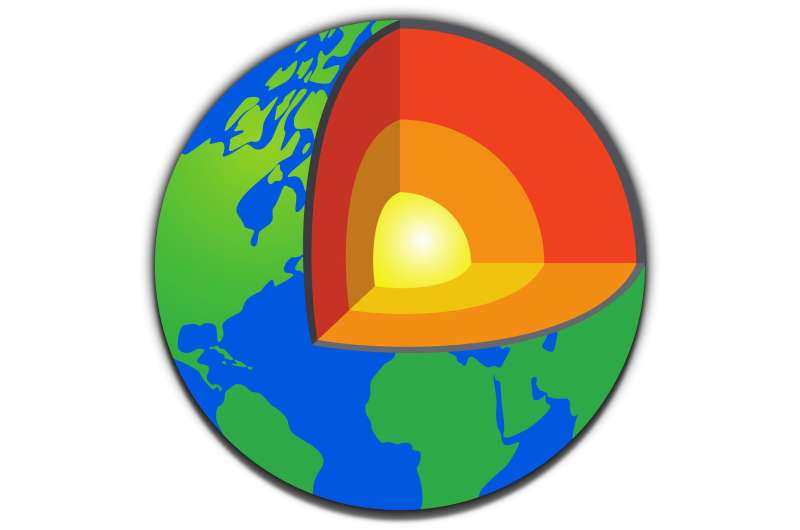Boron isotope helps to trace fluid processes in subduction zone

Subduction zone fluids are the key carrier for element migration and matter cycles between the crust and mantle of the Earth. Interpreting the sources, properties and signatures of fluids has significant implications for unveiling crucial geochemical issues, such as the interaction between crust and mantle, and the long-term evolution in deep Earth.
Since subducting oceanic crust is hard to return to the Earth's surface after entering deep mantle, it is difficult to find ultrahigh-pressure (UHP) metamorphic rocks in oceanic subduction zones to study the preceding metasomatism.
In a recent study, a research team led by Prof. Chen Yixiang from the University of Science and Technology of China (USTC) of the Chinese Academy of Sciences with his collaborators, utilized tourmaline boron isotopes as fingerprints for tracing fluid processes in subduction zones, and successfully identified the sources and properties of the fluids. This work was published in Geochimica et Cosmochimica Acta.
Boron can identify not only the source fluids from continents and oceanic slabs, but also the different compositions of source fluids in oceanic slabs. Since tourmaline is an extremely boron-rich mineral, the research team carried out in-situ boron isotopic analysis of tourmaline from the Dora-Maira Massif in the Western Alps based on their previous study.
The researchers found that the tourmaline in metasomatic rocks (Tur-S) of whiteschist and phengite schist contained the highest XMg worldwide, and much higher δ11B values than that of tourmaline in the metagranitoid (Tur-G), indicating that Tur-S was shaped by fluid metasomatism. By developing a quantitative modeling method, the researchers revealed that the metasomatism derived from serpentinite rather than from crust or sediments in subducted slabs. Using whole-rock geochemistry and earlier research, the team illustrated that the serpentinite originated from mantle wedge instead of subduction slabs. The results were also consistent with the previous investigation on Mg-Fe isotope of whiteschist.
By identifying B isotope in different rocks as fingerprints, Prof. Chen' s team revealed the crust-mantle interaction between metasomatism by crust-derived fluid and mantle-derived fluid during the processes of oceanic subduction and continental collisions. Therefore, tourmaline B isotope can be used as an effective tool to identify the sources and properties of fluids in deep subduction zones.
More information: Jia-Wei Xiong et al, Tourmaline boron isotopes trace metasomatism by serpentinite-derived fluid in continental subduction zone, Geochimica et Cosmochimica Acta (2022). DOI: 10.1016/j.gca.2022.01.003
Journal information: Geochimica et Cosmochimica Acta
Provided by University of Science and Technology of China





















